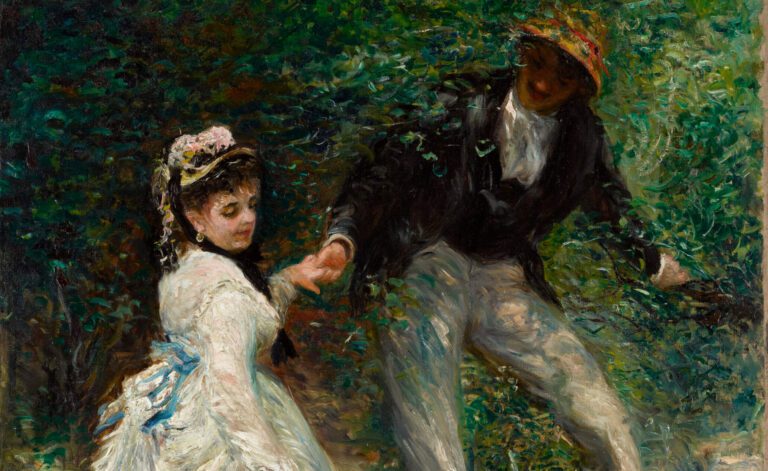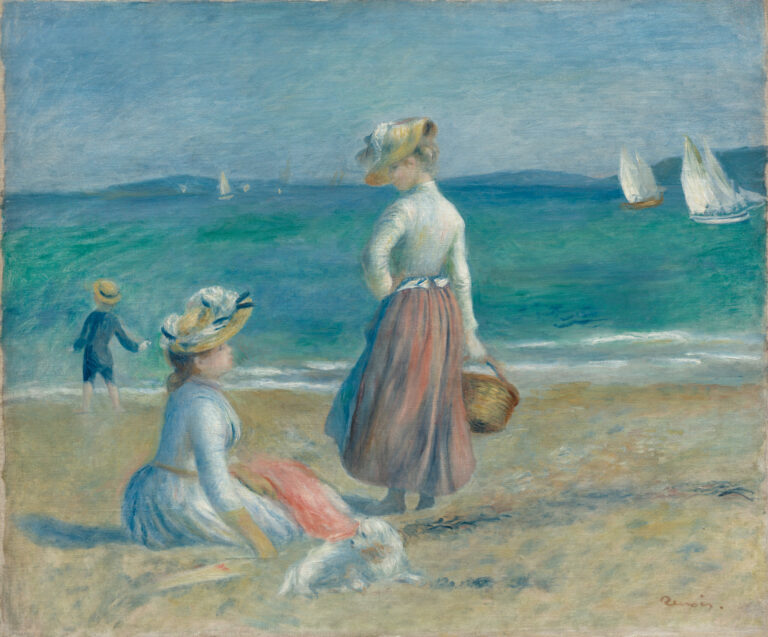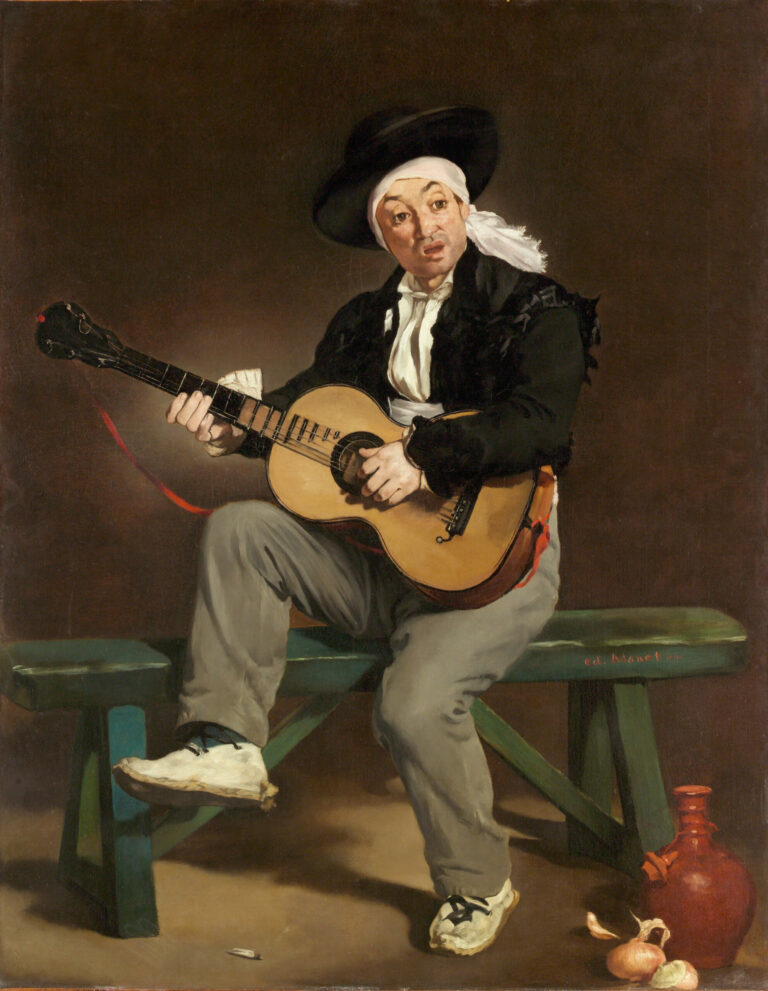
Paris, early 1880s. In his studio, Édouard Manet orchestrates a café scene. A young woman in black, elegantly gloved, leans over her illustrated newspaper. Around her: a marble table, a beer mug. The illusion is perfect. Yet it is a set. Behind her, this lush garden is not a Parisian terrace, but one of his own canvases.
An Impressionist Staging
Manet paints with total freedom. Rapid, visible brushstrokes construct the volume of the black hat and the texture of the leather gloves. The light palette vibrates under the light. The brush runs across the canvas, seizes the movement, the moment when the reader is absorbed in her newspaper. The brushstrokes do not seek to conceal their presence: they assert the pictorial matter, claim the modernity of the gesture.
Capturing Modern Life
In Parisian cafés like the Café Nouvelle-Athènes, Manet and his circle—Degas, Monet, Renoir, but also Baudelaire and Zola—observed urban life, the daily animation they wanted to capture on their canvases. This woman absorbed in her reading embodies this modernity: feminine leisure, the illustrated press, bourgeois elegance. By recreating the scene in his studio, Manet controls light and time, while preserving the authenticity of a stolen moment.
Manet, Pioneer of Modernity
Édouard Manet (1832-1883) revolutionized French painting by representing his era without idealization. Close to the Impressionists without ever exhibiting with them, he developed a free technique with visible brushstrokes. Woman Reading, painted shortly before his death, synthesizes his approach: capturing the ephemeral with boldness and sensitivity.
Think about it
💭 What was she reading in that newspaper to be so absorbed? What subjects fascinated Parisian women in this late century?
About This Work
- Woman Reading, Édouard Manet, 1880-1882
- Oil on canvas, 61.2 × 50.7 cm
- Art Institute of Chicago
- https://www.artic.edu/artworks/14591/woman-reading






